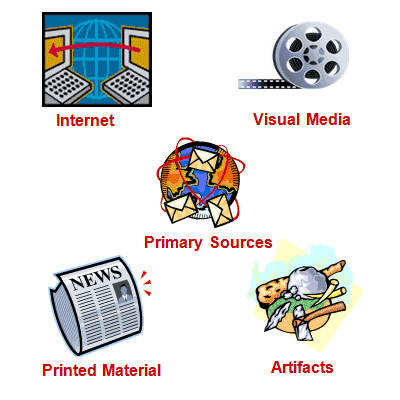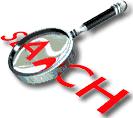As you begin to create literacy education program for your students, you will come across a wide array of information about media literacy. Click on each icon for information.

As you begin to create literacy education program for your students, you will come across a wide array of information about media literacy. Click on each icon for information.

Internet
The Internet is a worldwide, publicly accessible series of interconnected computer networks that transmit data. The Net is a worldwide system of computer networks - a network of networks in which users at any one computer can, if they have permission, get information from any other computer.
The Internet is a public, cooperative, and self-sustaining facility accessible to hundreds of millions of people worldwide. Physically, the Internet uses a portion of the total resources of the currently existing public telecommunication networks. Information is at the users fingertips.
For additional Internet Definitions and terms click on the link.
Internet Terminology and Definitions: https://mason.gmu.edu/~montecin/netterms.htm
Visual Media
A picture may be worth a thousand words, but what if the picture is a fake?
How to determine the truthfulness of an image requires investigative skills that accompany information fluency.
Media literacy enables students to access, analyze, critically evaluate, and produce communication in a variety of forms. Students may keep reflection journals and digital scrapbooks on the media they read, and record responses to prompts that the teacher prescribes. Students learn to document facts through templates provided through interactive programs and visual media.

By educating your students to understand and communicate through visual media such as web designs, the creation of I-movies and podcasts, PowerPoint, Keynotes, film, video streaming, and web-based learning, you enable students with the necessary tools to thrive in increasingly media-varied environments. With this technology comes multi-literacy such as visual images and their relationship to the written word; visual design in desktop publishing and the interface of visual and linguistic meaning in multimedia. Students, with teachers' guidance, can use online web-based sites to work collaboratively with peers to create websites and links to validate their research and readings and enhance critical and creative thinking skills. They then collaborate with peers, world-wide, who likewise create sites based on research.
Click on the links for additional information.
Visual Literacy
https://www.edutopia.org/blog/social-media-visual-literacy-classroom-dave-guymon
Media production; new shows
Primary Sources
The use of media literacy allows you to help your students to code and decode complex messages in a variety of media—print and non-print texts, hypermedia such as pop-up advertising techniques, URL addresses and sites—and make distinctions between primary and secondary sources of information. Media literacy enables students to access, analyze, critically evaluate, and produce communication in a variety of forms as well as enhances their own literacy skills. If you strive to teach students the best way to evaluate critically the information that they find in relation to the purpose at hand, you will produce a generation of digitally literate adults who are equipped to learn throughout their lifetimes. In the end, is this not the greatest lesson you can teach today's students?
Primary Sources consist of information that provides first-hand accounts of the events, practices, or conditions you are researching. In general, these are documents that were created by the witnesses or first recorders of these events at about the time they occurred, and include diaries, letters, reports, photographs, creative works, financial records, memos, and newspaper articles and more. Primary sources also include first-hand accounts that were documented later, such as autobiographies, memoirs, and oral histories. The most useful primary sources are usually considered to be those that were created closest to the time period researched. Primary sources of information allow the learner to access original and unedited information. A primary source requires the learner to interact with the source and extract information.
Secondary sources are edited primary sources, second-hand versions. They represent someone else's thinking on historical events and persons.
It is important that your students learn at an early age the difference between these two. Media literacy education must provide tools to help student critically analyze print and non-print to detect propaganda, bias, censorship and plagiarism. Student need to be aware of misrepresentation and manipulation of text (especially through commercials and public relations techniques), and understand the role of mass media in constructing views of reality.
Click on the links for more information on primary sources and their use in media literacy.
Using Primary Sources in the Classroom
http://www.loc.gov/teachers/usingprimarysources/
Making Sense of Evidence
http://historymatters.gmu.edu/browse/makesense/
How to Read a Primary Source
Printed Material
Print material is paged material for documents in hard copy or viewed on screen in a print preview mode. Printed material comes in a wide variety: books, plays, poems, essays, lyrics, periodicals, dictionaries and reference books, notes, letters, reports, newsletters, newspapers, transparencies, brochures, programs, playbills, scripts, graphic designs, PowerPoints, web publications, digital storytelling, text interaction, annotations, note-taking the list goes is almost endless. Printed material include electronic and hard copies/text. The goal of printed material is to share useful or interesting information with others. Printed materials are complex as they evoke publishing processes; they determine what format, language, level of detail and system of distribution the user will encounter.
As a teacher, you need to be familiar with a variety of age appropriate printed material for emergent literacy.
Click on the following Web sites for information about printed materials for the elementary level.
CyberGuides for Elementary Level
http://www.cyberbee.com/guides_sites.html
Best Books of the Year
http://www.acs.ucalgary.ca/~dkbrown/bestbooks.html
Just Read, Florida!
http://www.fldoe.org/academics/standards/just-read-fl/
Media Literacy Kit
http://www.medialit.org/sites/default/files/01_MLKorientation.pdf
Media Literacy Links and Resource
Artifacts
Encarta Dictionary defines artifact as
Your students may be familiar with the term artifact as cited in the first definition. As stated, artifacts can be created and used by other than traditional means. In terms of media literacy, text templates can generate text artifacts. Text templates can use models as input and produce arbitrary text, such as code files, HTML reports and more. Artifacts are also a natural byproduct of digital compression methods such as JPEG and MPEG which are images. In digital cameras, artifacts may arise when performing digital zoom. Educators must encourage students to embrace technology and use it as a medium for delivery of a product, project, and action plans. You and your students can create artifacts.